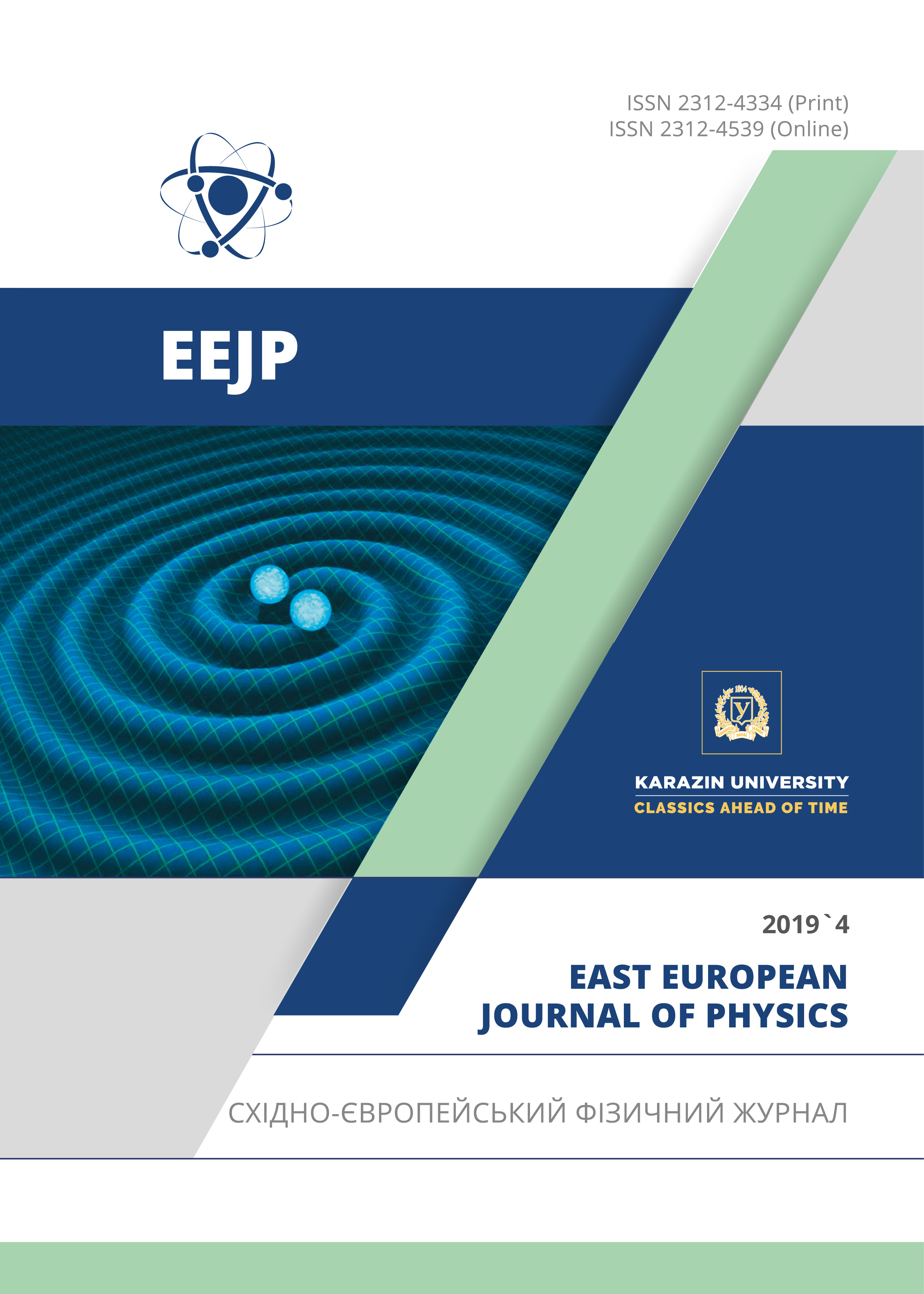Effect of the Transatmospheric Sun Electromagnetic Radiation, Simulated Laboratory, on the Mechanical Properties of the KAPTON H Type Polyimide Films
Abstract
The mechanical properties (limit of forced elasticity, fracture stress, total deformation to failure and its components) of a 75 mm-thick polyimide film of kapton H type under uniaxial tension conditions at 293 K after exposure to the outer space factors were studied. The electromagnetic radiation of the transatmospheric Sun in the wavelength range of 250-2500 nm (EMRS) for 100 hours and vacuum ultraviolet (VUV) and ultra soft x-ray (USX) radiation in the range of 1.24-170 nm – for 100 and 500 hours were simulated under laboratory conditions. The effect of separate exposure in each of the wavelength ranges was investigated. It was found that after irradiation in the both wavelength ranges the films remained in a forced-elastic state. The tension diagrams, like in the initial state, have two stages. The contributions of the elastic, irreversible and highly elastic (delayed and reversible at test temperature) components to the total deformation to failure were determined. It was found that the limit of forced elasticity increased after irradiation both with EMRS, and with VUV and USX radiation. In this case an increase in the limit of the forced elasticity under the influence of EMRS was caused by heating of the film in the course of irradiation, and under the influence of VUV and USX radiation – by radiation effects. The fracture stress and total deformation to failure change weakly and only under the influence of VUV and USX radiation. With changing the duration of exposure to VUV and USX radiation (100 or 500 hours), the fracture stress and the total deformation to failure change non-monotonously. The negative consequence of exposure to VUV and USX radiation is the contribution values redistribution of the individual components of the total deformation to failure. VUV and USX radiation within 500 hours leads to a halving of the contribution of elastic deformation, which is reversible at deformation temperature.
Downloads
References
V.A. Lototskaya, L.F. Yakovenko, E.N. Aleksenko, N.I. Velichko, I.P. Zaritskiy, V.V. Abraimov, Wen Zhu Shao and Liu Hai, East. Eur. J. Phys. 3, 53-60 (2018), https://doi.org/10.26565/2312-4334-2018-3-06.
E.A. Plis, D.P. Engelhart, R. Cooper, W.R. Johnston, D. Ferguson and R. Hoffman, Appl. Sci. 9, 1999-2022 (2019), https://doi.org/10.3390/app9101999.
V.A. Lototskaya, L.F. Yakovenko, E.N. Aleksenko, V.V. Abraimov and Wen Zhu Shao, East. Eur. J. Phys. 2, 44 52 (2017), https://doi.org/10.26565/2312-4334-2017-2-06.
L.М. Volikova and V.K. Chernetskiy, in: Прикладне кріогенне і вакуумне матеріалознавство [Applied cryogenic and vacuum material science] (Naukova dumka, Kyiv, 1991), pp. 137-143. (in Russian)
V.V. Abraimov, A.A. Negoda, A.P. Zavalishin and L.K. Kolybaev, Space Science and Technology, 1(2), 76-80 (1995), https://doi.org/10.15407/knit1995.02.076. (in Russian)
Е.A. Bondarenko, Yu.S. Doronin, Е.Т. Verkhovtseva, Е.V. Gnatchenko and A.A. Tkachenko, in: IVth Intern. Conf. on Laboratory Research for Planetary Atmospheres: Program of Invited Papers and Contributed Posters. (Munich, 1992), pp. 26.
E.T. Verkhovtseva, V.I. Yaremenko and V.D. Telepnev, Space Science and Technology, 4(2), 102-109 (1998), https://doi.org/10.15407/knit1998.02.102 (in Russian)
M.I. Bessonov, M.M. Koton, V.V. Kudryavtsev and L.A. Layus, Полиимиды – класс термостойких полимеров [Polyimides – class of heat-resistant polymers] (Nauka, Leningrad, 1984), pp. 328. (in Russian)
Authors who publish with this journal agree to the following terms:
- Authors retain copyright and grant the journal right of first publication with the work simultaneously licensed under a Creative Commons Attribution License that allows others to share the work with an acknowledgment of the work's authorship and initial publication in this journal.
- Authors are able to enter into separate, additional contractual arrangements for the non-exclusive distribution of the journal's published version of the work (e.g., post it to an institutional repository or publish it in a book), with an acknowledgment of its initial publication in this journal.
- Authors are permitted and encouraged to post their work online (e.g., in institutional repositories or on their website) prior to and during the submission process, as it can lead to productive exchanges, as well as earlier and greater citation of published work (See The Effect of Open Access).








